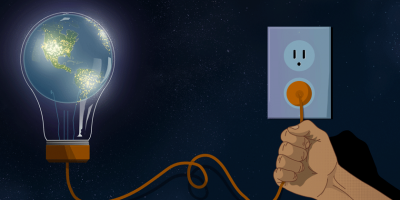
Most people in North America can't see the Milky Way. The reason? We're ensconced in a luminous fog of artificial lighting 24/7. The evolution of lighting technology over the last century has made it possible to live, work, and play at any hour—day or night. But light pollution affects all life on earth, from humans to plants and insects. So, how did we find ourselves surrounded by a glowing shroud of electricity... and can we have the dark, without giving up the light?
Guests:
- Hal Wallace, curator of electricity collections, Smithsonian National Museum of American History
- Lisbeth Fuisz, coordinating director, Lights Out D.C.
- Brian Schmidt, museum specialist, Smithsonian National Museum of Natural History
- Diane Turnshek, Astronomer; Dark Skies Advocate
This episode was produced in collaboration with the Smithsonian's National Museum of Natural History. Their new exhibition Lights Out: Recovering Our Night Sky is on view March 23, 2023, until April 2025. Discover why dark nights matter, rekindle your connection with the night sky, and consider how much light at night is enough—for whom, for what purpose, and who gets to decide?
Sign up to unlock the full Sidedoor experience!
Get bonus content, news, and updates in your inbox.
